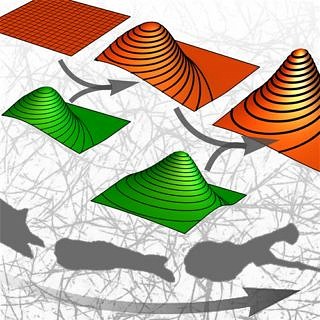FAU researchers uncover patterns in the movement of cancer cells

Expansion of a well-established method used in probability theory enables new insights into the behaviour of tumour cells
Bayesian statistics, which can be used to describe the information about a situation and the process of learning about it mathematically, is often used in searches for planes which have crashed or ships which have sunk. The search team starts by making a map of the most likely and less likely locations of the accident and then continuously updates this map as new information is received in order to hone in on the actual site of the accident. In a study published in the latest edition of the renowned journal Nature Communications*, FAU physicists demonstrate that this process, known as Bayesian updating, can also be applied to objects whose movement patterns change constantly and unpredictably. The researchers used the process to observe cancer cells as they moved through artificial tissue, allowing them a more detailed insight into the behaviour of the cells than is possible with methods that have been used previously.
During their observations, the team of researchers led by Prof. Dr. Ben Fabry, PD Dr. Claus Metzner and Christopher Mark, MSc, at FAU’s Chair of Biophysics initially determined that the tumour cells’ movement patterns changed constantly, sometimes slowly but occasionally dramatically. This kind of superstatistical behaviour means that on average it is not possible to identify considerable differences between different types of cells. This makes it difficult to make reliable prognoses of how tumour cells in different types of cancer will spread in the body. However, the FAU researchers discovered that when the apparently chaotic sequence of movements are plotted on a Bayesian map, a clear pattern that is typical of the particular type of cancer cells and the particular tissue types is revealed. This pattern can be read like fingerprint. The researchers hope that in the future these kinds of statistical fingerprints will be able to help determine the aggressiveness of cancer cells more accurately and enable appropriate treatment to be developed. In addition, the working group is also investigating how Bayesian updating can be used as a new tool in various other areas, such as in the analysis of the movements patterns of penguins, migratory birds or whales, in the evaluation of accidents in mines, or in risk assessment in stock markets.
*doi:10.1038/ncomms8516
Further information:
PD Dr. Claus Metzner
Phone: +49 9131 8525613
claus.metzner@fau.de